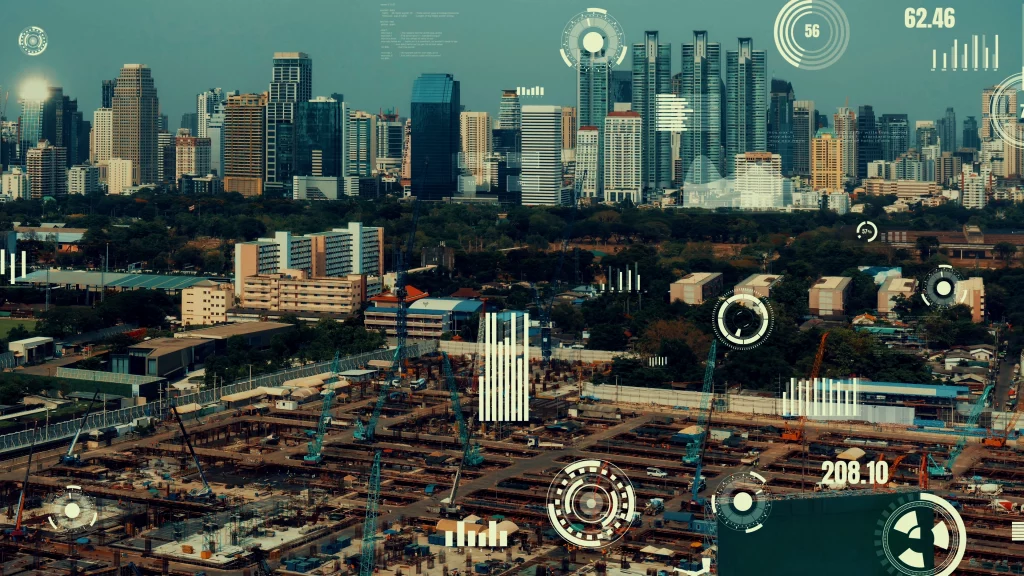The concept of smart cities is no longer just a futuristic dream — it’s becoming a reality in many parts of the world. By integrating advanced technologies like IoT devices, big data analytics, and AI into urban systems, these cities aim to enhance the quality of life for their residents. However, with great connectivity comes great vulnerability. The interconnected nature of smart cities introduces complex cybersecurity challenges that, if left unaddressed, could lead to catastrophic consequences.
This article explores the key cybersecurity threats faced by smart cities and offers practical solutions to ensure these urban areas remain safe, secure, and efficient.
What Makes a City “Smart”?
A smart city leverages technology to improve urban living by optimizing resources, streamlining services, and reducing waste. Key components include:
- IoT Devices: Sensors, cameras, and smart meters that collect real-time data.
- Critical Infrastructure: Systems like power grids, water supply, public transport, and healthcare.
- Communication Networks: Technologies like 5G and fiber optics that connect everything together.
- AI and Big Data: Tools that analyze data for insights and automated decision-making.
While these elements bring incredible benefits, they also create a vast, interconnected web that’s a tempting target for cybercriminals.
Why Are Smart Cities Attractive Targets?
The very features that make smart cities efficient also make them vulnerable. Here are some of the biggest reasons cyberattacks on smart cities are becoming more common:
- Massive Attack Surface: With thousands (or millions) of connected devices, there are countless entry points for hackers.
- Critical Dependencies: Many essential services, like electricity and water, depend on interconnected systems. A single breach could disrupt an entire city.
- Legacy Systems: Many cities integrate older systems with new technologies, creating vulnerabilities.
- High Stakes: The potential impact of a successful attack—chaos, economic damage, and even loss of life—makes smart cities high-value targets for cybercriminals, hacktivists, and even nation-states.
The Threat Landscape
1. Data Breaches
Smart cities generate vast amounts of sensitive data about their residents, from energy usage patterns to personal health information. If this data falls into the wrong hands, it could lead to identity theft, blackmail, or other malicious activities.
2. IoT Vulnerabilities
IoT devices are often the weakest link in a smart city’s network. Many lack robust security measures, making them easy to exploit. Hackers could use them to launch massive Distributed Denial of Service (DDoS) attacks or even take over entire systems.
3. Attacks on Critical Infrastructure
Targeting essential systems like power grids, water supply, or traffic control can cause widespread disruption. A well-coordinated cyberattack could bring a city to a standstill or even endanger lives.
4. Insider Threats
Not all threats come from outside. Employees or contractors with access to critical systems can misuse their privileges, whether intentionally or accidentally, to cause harm.
5. Cyber-Physical Threats
In smart cities, the digital and physical worlds are deeply intertwined. A hacker could manipulate traffic signals, causing accidents, or disable streetlights to create unsafe conditions.
How Can Smart Cities Stay Secure?
Creating a safe smart city isn’t just about adding more firewalls or antivirus software. It requires a holistic approach that combines technology, governance, and public awareness. Here are some strategies:
1. Secure IoT Devices
IoT devices are at the heart of smart cities, and securing them is critical. This includes:
- Strong Encryption: To protect data being transmitted.
- Regular Updates: Ensuring devices always have the latest security patches.
- Certification Standards: Requiring manufacturers to meet strict cybersecurity standards.
2. Build Resilient Networks
Smart cities should adopt network security measures like:
- Segmentation: Breaking networks into smaller, isolated sections to contain breaches.
- Zero Trust Architecture: Ensuring no device or user is trusted by default, even if they’re already inside the network.
3. Protect Data at All Costs
With so much data being generated, it’s crucial to handle it responsibly:
- End-to-End Encryption: To protect data in transit and at rest.
- Access Controls: Limiting who can access sensitive data.
- Data Minimization: Collecting only the data that’s absolutely necessary.
4. Leverage AI for Cybersecurity
Artificial intelligence can be a game-changer for smart city security. AI can detect unusual activity, respond to threats in real-time, and even predict potential vulnerabilities before they’re exploited.
5. Educate Everyone
Cybersecurity isn’t just the responsibility of IT teams. City officials, employees, and even residents should be educated about:
- Recognizing phishing emails and scams.
- Securing personal devices that connect to city networks.
- Reporting suspicious activities.
6. Plan for the Worst
Even with the best defenses, breaches can still happen. That’s why smart cities need robust incident response plans:
- Rapid Containment: Stopping the spread of an attack as quickly as possible.
- Regular Drills: Testing response plans to ensure they work in real-world scenarios.
Real-World Examples: Lessons from the Field
Singapore
Known for its innovative approach, Singapore uses AI-driven threat detection and has established a centralized Cyber Security Agency. This has helped minimize disruptions and protect critical systems.
Barcelona
Barcelona has implemented blockchain technology to secure data transactions and prevent tampering. This approach has significantly reduced the risk of data breaches.
Estonia
After experiencing a massive cyberattack in 2007, Estonia invested heavily in securing its digital infrastructure. The country now uses advanced encryption and digital ID systems to protect its citizens.
The Path Forward
Cybersecurity is the backbone of any successful smart city. Without it, the technologies meant to improve urban life could turn into tools for chaos and disruption. By prioritizing security, fostering collaboration between governments and private companies, and embracing innovations like AI and blockchain, we can build cities that are not only smart but also safe.
The journey to securing smart cities won’t be easy, but it’s essential for the future of urban living. Let’s ensure that as we make our cities smarter, we also make them safer.
